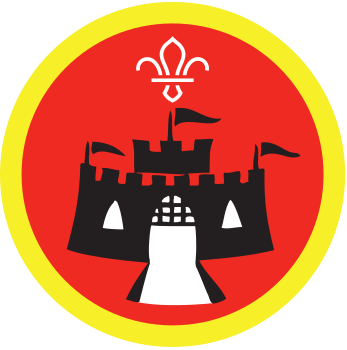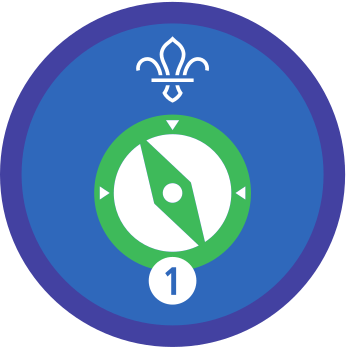
Try making historical maps
You’ll need
- Tables
- Chairs
- A4 paper
- Pens or pencils
- Paint brushes
- Access to water
- Disposable gloves
- Paint pots
- Cocktail sticks
- Bars of soap
- Paint ingredients (see instructions for suggestions)
- UK maps of urban and rural areas
Before you begin
- Use the safety checklist to help you plan and risk assess your activity. There's also more guidance to help you carry out your risk assessment, including examples.
- Make sure all young people and adults involved in the activity know how to take part safely.
- Make sure you’ll have enough adult helpers. You may need some parents and carers to help.
Planning and setting up this activity
- Check with your group, including leaders and helpers, to see that no-one is allergic or intolerant to any of the paint ingredients you’re getting. You could use regular paint watered down as an alternative.
- Have everyone come to this session in clothes they don’t mind getting paint on.
- Print copies of the ‘Maps from history’ sheets. Set up tables and chairs for each group and put the ‘Maps from history’ sheets on each table, as well as the urban and rural maps, paper and pencils.
- Set up a separate table with paint pots, gloves, soap, brushes and cocktail sticks.
Running this activity
- Explain that everyone will be looking at historical maps and how they’ve changed through the years to become the maps we have today.
- Ask everyone to get into groups and give each group some examples of historical maps from the ‘Maps from history’ sheets to look at.
- Each group should talk through the different features of each historical map. They could try to find any familiar locations or symbols, then see if they can figure out what they might mean.
- Next, get everyone to put on their gloves before handling anything.
- Start making some natural paints that early map-makers may have used. Do this by adding to a pot: a teaspoon of an ingredient, half a teaspoon of flour and a small amount of water at a time, then mixing until this reaches the consistency of paint. Demonstrate this to the groups first, then let them make the paints. If you’ve used the ingredients we’ve suggested, here are some of the colours you can make:
-
- Turmeric – orange
- Ground mustard seeds – yellow
- Beetroot – red
- Activated charcoal – black
- Blueberries – purple
- Blueberry juice and distilled vinegar – blue
- Spinach – green
- Everyone could start by making a petroglyph or pictograph from the Stone or Iron Age. They should copy a rural map, using the symbols they examined earlier. Those making petroglyphs should carve the symbols into bars of soap with cocktail sticks, then use some paint to colour in the symbol. Those making pictographs can paint with brushes straight onto some scrap paper.
- When these are finished, set them to one side to dry.
- Next, ask everyone to find an urban spot on the maps they copied that they wish to paint. Explain that they may choose any of the other historical map styles to paint. Allow everyone some time to choose an area and a style they like, then get them started. The maps need to represent the area copied and should be useful for someone navigating through that area.
- When these are finished, set them to one side to dry.
- When the maps are dry, place them alongside the conventional map that was copied to compare. Ask everyone to try to spot the similarities and the differences, then discuss them - which kind of map they’d prefer to use to navigate when out on a hike?
Petroglyphs (stone carvings) can be found all over the world and can be dated back to between 7000 and 12,000 years ago. Some in Australia are thought to date back 27,000 years. The images are created by removing the top layer of stone using a chisel and can be interpreted in many ways. Depending on their location around the world, they could be anything from astronomical markers to symbolic communications to pictures from stories. The pictures on the ‘Maps from history’ sheets could be interpreted as maps, with the circles possibly representing hills or settlements and the wiggly lines rivers or streams. What do you think they could mean?
Pictographs (stone paintings) are similar to petroglyphs, but they include colours. By developing paints from the ingredients around them, people could create more elaborate designs on the stones. These can be interpreted in the same way as petroglyphs but some include more detail, such as those representing animals, people or shapes. Pictographs are still used today in things like signs or instructions. What other pictographs can you think of that we use today?
The Roman Empire started in the eighth-century BC and ended around the fifth-century AD. In that time, they conquered and explored many places across Europe and beyond. Keeping a record of where they’d visited would’ve been a big task, so creating maps would’ve helped them every time they went on a new expedition. Their maps contained a lot more detail than previous examples, including names of towns, roads and landmarks. Do you think it would be easy to navigate present day Europe using one of these maps?
This is a map of the Scandinavian islands and was published in 1539. It was the first map of its kind covering the Nordic countries and included details and place names. It’s well known for its drawings of animals and sea creatures across the map. Produced in Venice and taking 12 years to complete, there are still two known copies around today. One is held in Sweden and one in Munich. How is this map different to any others you’ve seen?
Maps have developed over time and people have come to understand the shape of the British Isles better from travel and expeditions. The four maps from each century show how maps changed in terms of their scale, design and the shape of the landmasses they represented. They also show how colours started to be used to identify different things. Each design is slightly different. Which one do you find easiest to read? Can you find your local town on any of them? Could you navigate using any of these maps?
Reflection
Maps throughout history have helped people navigate their way around. They’ve been drawn in many different styles, used a variety of symbols to identify landmarks, and captured all sorts of places. Out of all the maps you’ve looked at, which one do you prefer, and which one do you think would be easiest to navigate with?
Everyone had the opportunity to try something new by reading different types of maps. How do you think this information can help you in the future? Did it give you a greater appreciation of the maps we have today?
Safety
All activities must be safely managed. You must complete a thorough risk assessment and take appropriate steps to reduce risk. Use the safety checklist to help you plan and risk assess your activity. Always get approval for the activity, and have suitable supervision and an InTouch process.
- Sharp objects
Teach young people how to use sharp objects safely. Supervise them appropriately throughout. Store all sharp objects securely, out of the reach of young people.
Depending on the complexity and detail of the maps the groups copied, it would’ve been more or less difficult to use the historical map styles to represent the features and symbols.
- Make sure everyone wears gloves when handling materials, to prevent any reactions to the paint ingredients on the skin, and to cover those who don’t wish to touch the paint. Double check for any allergies or intolerances before the session.
- If anyone doesn’t want to discuss their painting with others, they could do this with the person leading the activity afterwards.
All Scout activities should be inclusive and accessible.
Anyone who enjoyed making paints should try the Dye another day activity to make their own tie-dye items. Anyone interested in the maps from the ‘Maps from history’ sheets should do some research into the different eras they were from, the places they represent and the people who made them.
Young people learned how to make natural paints and created their own maps. They could now run this activity with a younger group to teach them about the history of maps and let them have a go at creating a historical map.

